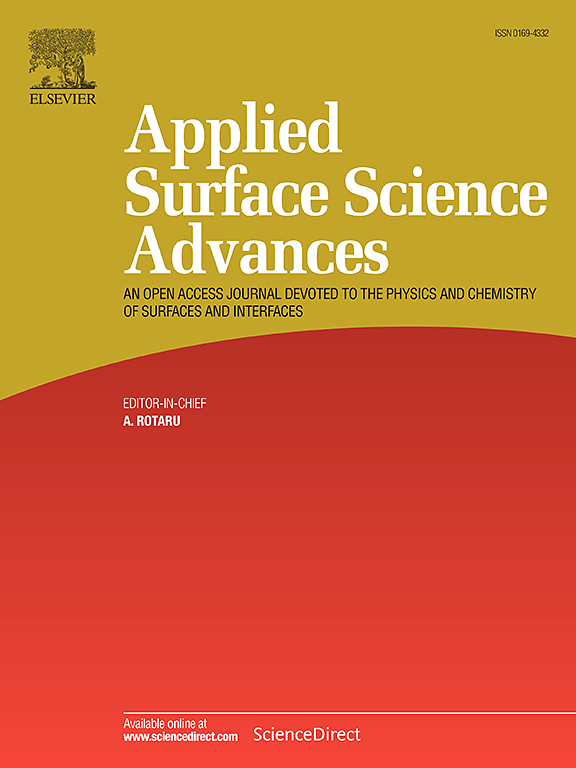Oxygen network formation for efficient charge transport and durable BiVO4 photoanodes with ultra-thin TiO2 layer in solar water splitting
IF 8.7
Q1 CHEMISTRY, PHYSICAL
引用次数: 0
Abstract
Bismuth vanadate (BiVO4) has emerged as a prominent oxide semiconductor in solar water splitting investigations owing to facile synthesis and favorable band-alignment with the water oxidation level. Oxygen and oxygen vacancies (VO) within the BiVO4 exhibit multifaceted roles across bulk, surface, and interface. This study presents a method for selectively regulating the surface and bulk VO in BiVO4 through facile chemical redox reactions. A large amount of VO on the BiVO4 surface enables the formation of a robust networking interface with oxide-based protection overlayers, whereas VO in bulk region must be effectively suppressed. A significant amount of VO can be specifically formed on the BiVO4 surface via a controlled surface chemical reduction reaction (SCR) at the atomic level, precisely controlling the presence of O2- and OH- ions. Here, we quantitatively and qualitatively analyze VO changes and the impact of VO on photoelectrochemical operation. As a result, The SCR process allows for the strategic control of the BiVO4 surface into a VO-rich surface. The controlled surface enhances the charge kinetic by promoting the conformal coating of a n-TiO2 protective layer and decreasing the charge loss in the interface junction with ensuring stability. Furthermore, the SCR-BiVO4/TiO2/CoPi photoanodes exhibit a highly stable photocurrent density of 3.9 mA cm−2 at 1.23 VRHE. Surface modification and understanding of the oxygen-end network can be broadly applied to photoelectrodes that require oxide-based overlays.

太阳能水分解中高效电荷传输的氧网络形成和具有超薄TiO2层的耐用BiVO4光阳极
钒酸铋(BiVO4)因其易于合成以及与水氧化水平的良好带准关系,已成为太阳能水分离研究中的一种重要氧化物半导体。BiVO4 中的氧和氧空位 (VO) 在块体、表面和界面上发挥着多方面的作用。本研究提出了一种通过简便的化学氧化还原反应选择性调节 BiVO4 表面和块体 VO 的方法。BiVO4 表面大量的 VO 能够与基于氧化物的保护覆盖层形成稳固的网络界面,而体积区域的 VO 则必须得到有效抑制。通过在原子水平上控制表面化学还原反应 (SCR),精确控制 O2- 和 OH- 离子的存在,可以在 BiVO4 表面特异性地形成大量 VO。在此,我们定量和定性地分析了 VO 的变化以及 VO 对光电化学操作的影响。因此,SCR 工艺可以将 BiVO4 表面策略性地控制成富含 VO 的表面。受控表面通过促进 n-TiO2 保护层的保形涂覆来增强电荷动力学,并在确保稳定性的前提下降低界面接合处的电荷损耗。此外,SCR-BiVO4/TiO2/CoPi 光阳极在 1.23 VRHE 条件下表现出高度稳定的 3.9 mA cm-2 光电流密度。表面改性和对氧端网络的理解可广泛应用于需要氧化物覆盖层的光电极。
本文章由计算机程序翻译,如有差异,请以英文原文为准。
求助全文
约1分钟内获得全文
求助全文

 求助内容:
求助内容: 应助结果提醒方式:
应助结果提醒方式:


